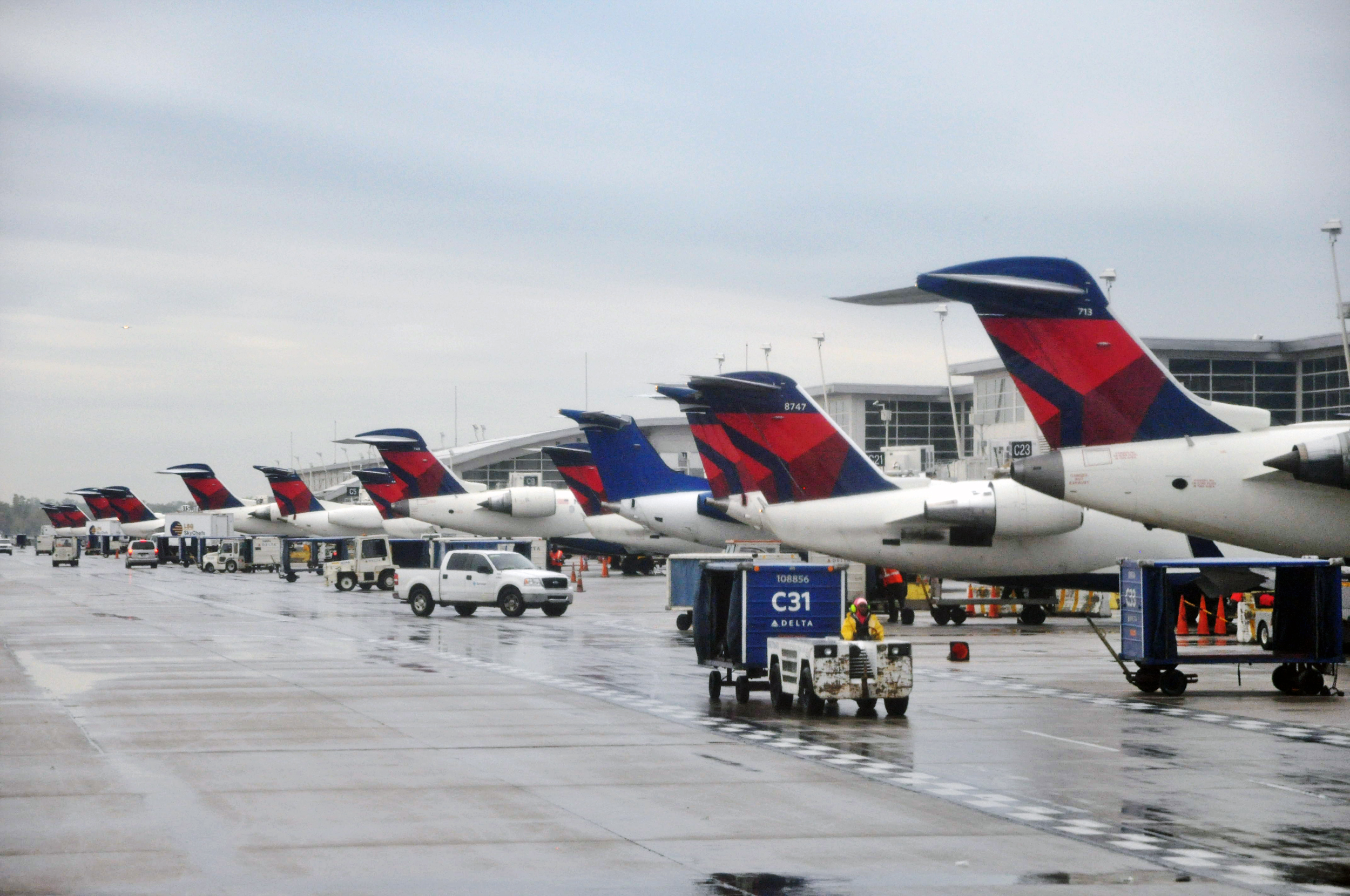By: Jesse Chan

Source: Flickr
The airline industry has seen its share of tumultuous events: bankruptcies, high fuel prices, and labor issues, among other things. Think of a modern business challenge—chances are the airline industry has experienced it. Many have decried the industry as value-destroying. Sir Richard Branson, founder of Virgin Atlantic Airways, remarked that “If you want to be a millionaire, start with a billion dollars and launch a new airline.” A 2011 International Air Transport Association report concluded that “over the past decade investors have seen their capital earn $20 billion less than it would have invested elsewhere.” Warren Buffett, when asked about the airline industry, said “you’ve got huge fixed costs, you’ve got strong labor unions, and you’ve got commodity pricing. That is not a great recipe for success.” But North American airlines recorded profits in recent years. Atlanta-based Delta Airlines, for example, reported $2.7 billion in profits for 2013. Has the industry cleared all the hurdles to stable profitability?
As recently as the mid-2000s, airlines engaged each other in destructive price wars, with fares often as low as $89 between Las Vegas and Washington, D.C. These price wars were ultimately unsustainable as jet fuel costs soared over the course of the decade. As operating costs skyrocketed, airlines hemorrhaged cash and many filed for bankruptcy. Further adding to these issues, customers were upset over the new fees for checked luggage, priority boarding, and mid-air refreshments. These were all measures the airlines took to combat rising jet fuel costs, as new low-cost entrants, including Spirit, JetBlue, and Southwest Airlines left the older, “legacy” carriers like American and United, unable to raise ticket prices out of fear of losing passengers.
These low cost carriers were unburdened by the wide host of costs that older airlines faced. The new airlines did not have “legacy” retirement obligations, complex fleets, expansive global networks, and different classes of service. Over the years, “legacy” carriers had met the needs of travelers by being all things to all people—offering amenities every air traveler might want in hope of capturing a person’s entire air travel business over the course of their lives. Loyalty programs helped to reinforce this behavior, rewarding frequent travelers with waived fees, dedicated customer service agents, and complimentary gate upgrades. The structure required to provide these services cost the airlines a great deal, although the legacy carriers benefited from an expansive global network. Many advertisements for legacy carriers discuss the ability to travel the world on a legacy carrier and its partners, something impossible or much more difficult to do with the low-cost carriers.
The new low-cost airlines offered little of these extras, instead focusing on serving a specific niche of the market and paring costs to the bone. These airlines also benefited from being young, as the low-cost airlines were unburdened with retirement health and pension obligations. The niche nature of the new airlines meant that each could compete effectively with a lower cost structure, operating profitably while offering low fares and cheerful service across a smaller, more focused network of flights. The low cost carriers were also, for the most part, relatively simple operations. Many operated a single type of plane with a single class of travel and limited cabin service.
To survive, legacy airlines pursued consolidation to provide the remaining airlines with considerable economies of scale. The consolidated airline would have at least one fewer competitor, more flights to more places more often, and economies of scale. Economies of scale is an idea where by expanding operations, the average cost per available seat mile (defined as a seat on a flight multiplied by the distance flown on that flight) would decline as fixed operational costs could be spread across a greater number of seat miles. The cost savings could then be invested in improving the travel experience, allowing the airline to command higher prices from customers. Airlines invested in new routes, increased frequencies, and improved cabins and ground experiences, especially for premium passengers. These considerations were critical in an industry where consumers value high frequency schedules, expansive global networks, and comprehensive loyalty programs. Over the past seven years, the United States “legacy” airlines have consolidated around three major North American carriers: American, Delta, and United.
However, each of these combined carriers faced challenges as they consolidated. Delta’s 2008 acquisition of Northwest Airlines faced a lengthy integration period, as integrating two complex global airlines is no easy task. Items that seem mundane such as whether a pilot should chime twice or four times to signal landing needed to be streamlined across the new combined airline. The combined airline also had to integrate frequent flier programs, computer reservation systems, and crew seniority lists. The merger between the two airlines, widely seen as highly successful, was not considered complete until the Federal Aviation Administration provided the airline with a combined operating certificate, allowing the airline to operate as a single carrier, which happened on December 31, 2009.
The recent mergers of United/Continental and American/U.S. Airways, each at different stages of integration, speak to the conclusion that many in the industry have reached: sustainable profitability can only be achieved through consolidation.
Today, the combined airlines are finally regaining their financial footing and generating profits. Low cost carriers have merged too—witness Southwest’s acquisition of competitor AirTran. While some smaller carriers like Spirit and Allegiant will continue to deliver healthy profits by focusing on an extremely narrow niche and serving a limited slate of destinations, most others will find consolidation beneficial.
Recent financial announcements by the airlines seem to indicate that long-term profitability is in sight. As American and U.S. Airways begin to consolidate their financial statements and operations, Delta is posting record profits and United has finally begun posting consistent and material profits after years of losses. The airlines have drastically changed their business model since the 1990s and 2000s. Priority boarding, preferred seats, checked luggage, and even in-flight refreshments are privileges and perks that were previously taken for granted by some travelers that are now for sale to all. In a sense, this is the new democratization of air travel—by stripping out all of the perks, airfares have fallen by nearly 50 percent since 1980 when adjusted for inflation.
In an industry infamous for consuming shareholder capital, it appears the airlines have finally reached financial stability and profitability. With increased revenues from ancillary fees, lean cost structures free of many heavy liabilities, and fewer competitors, it appears that the airlines have finally found a stable path to profitability.


